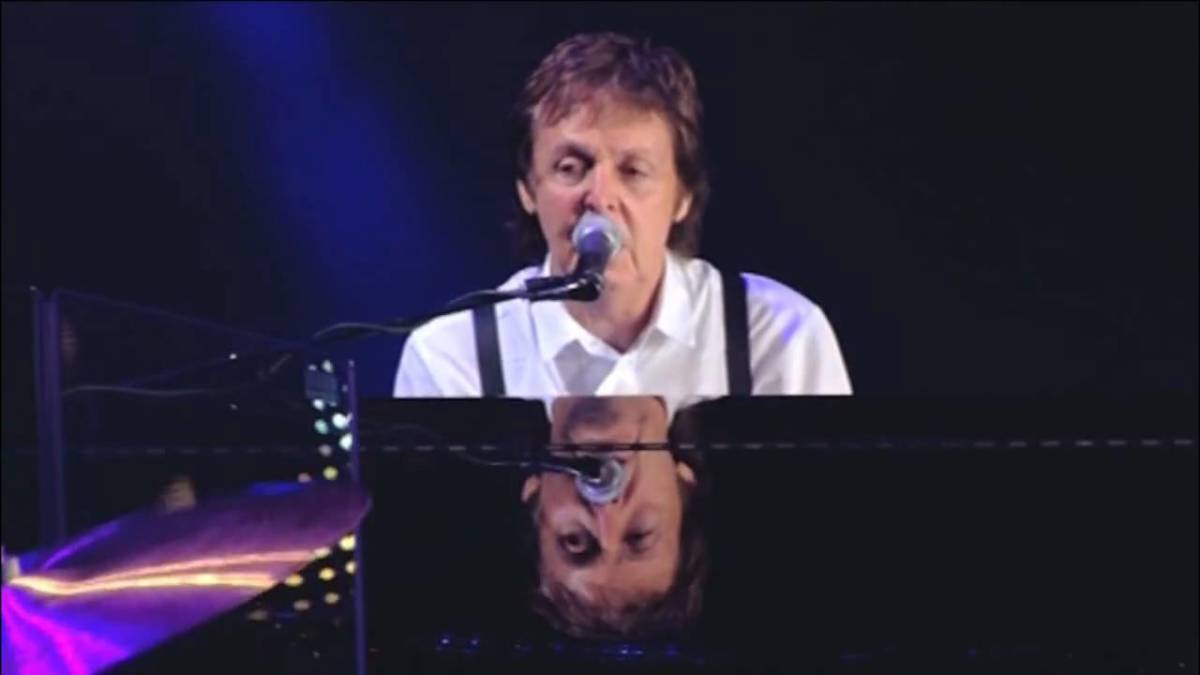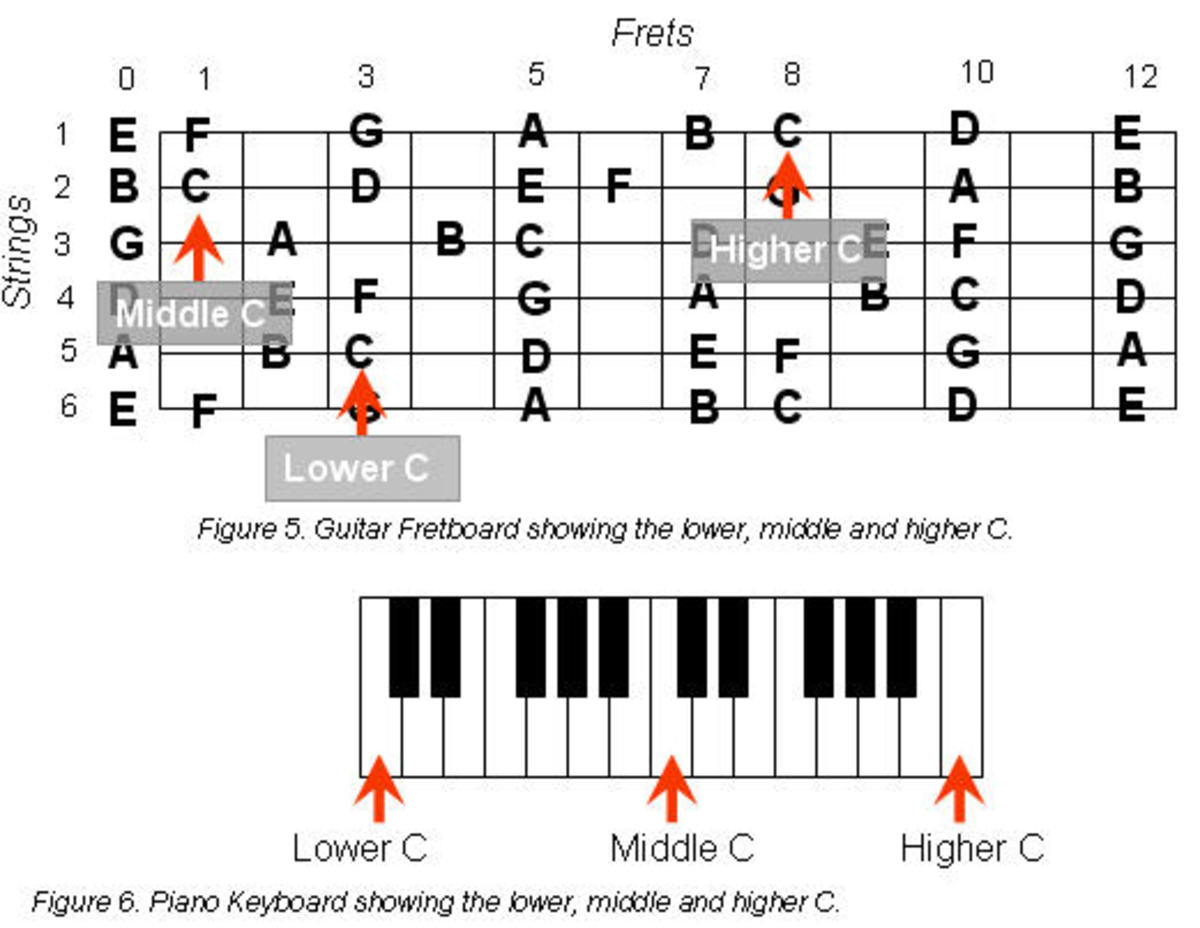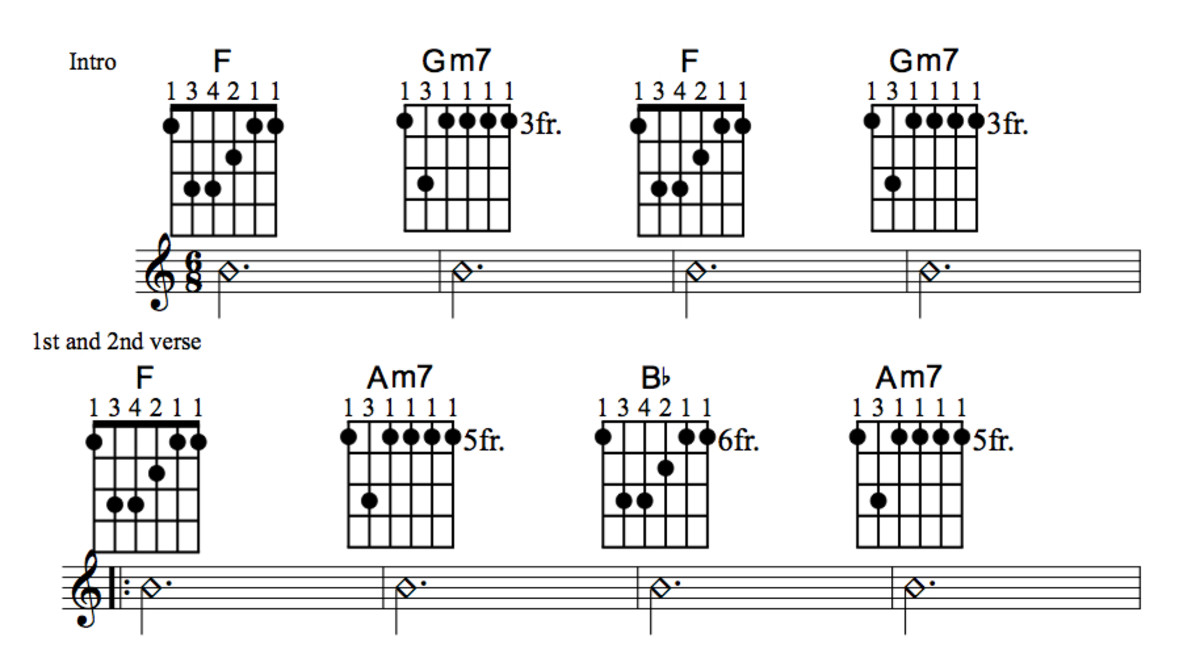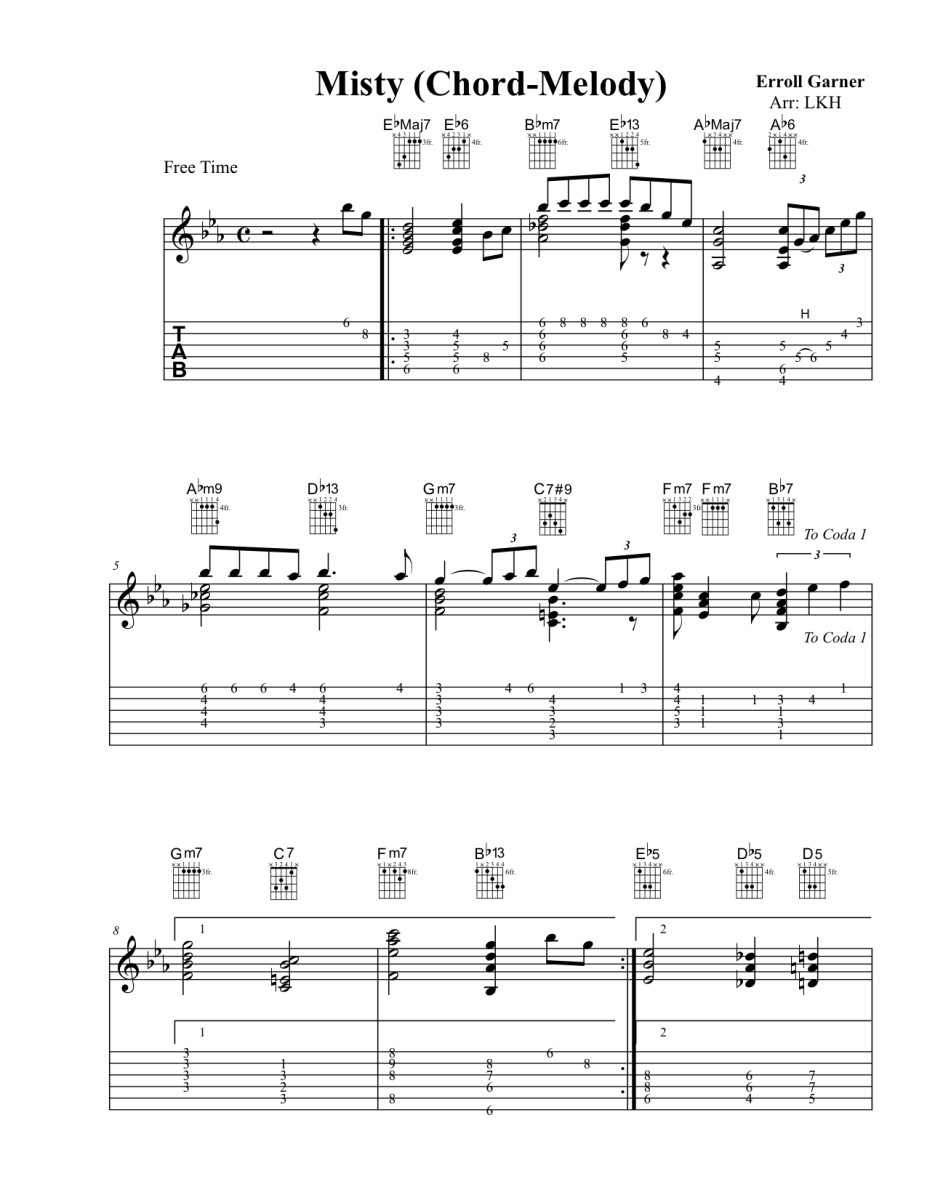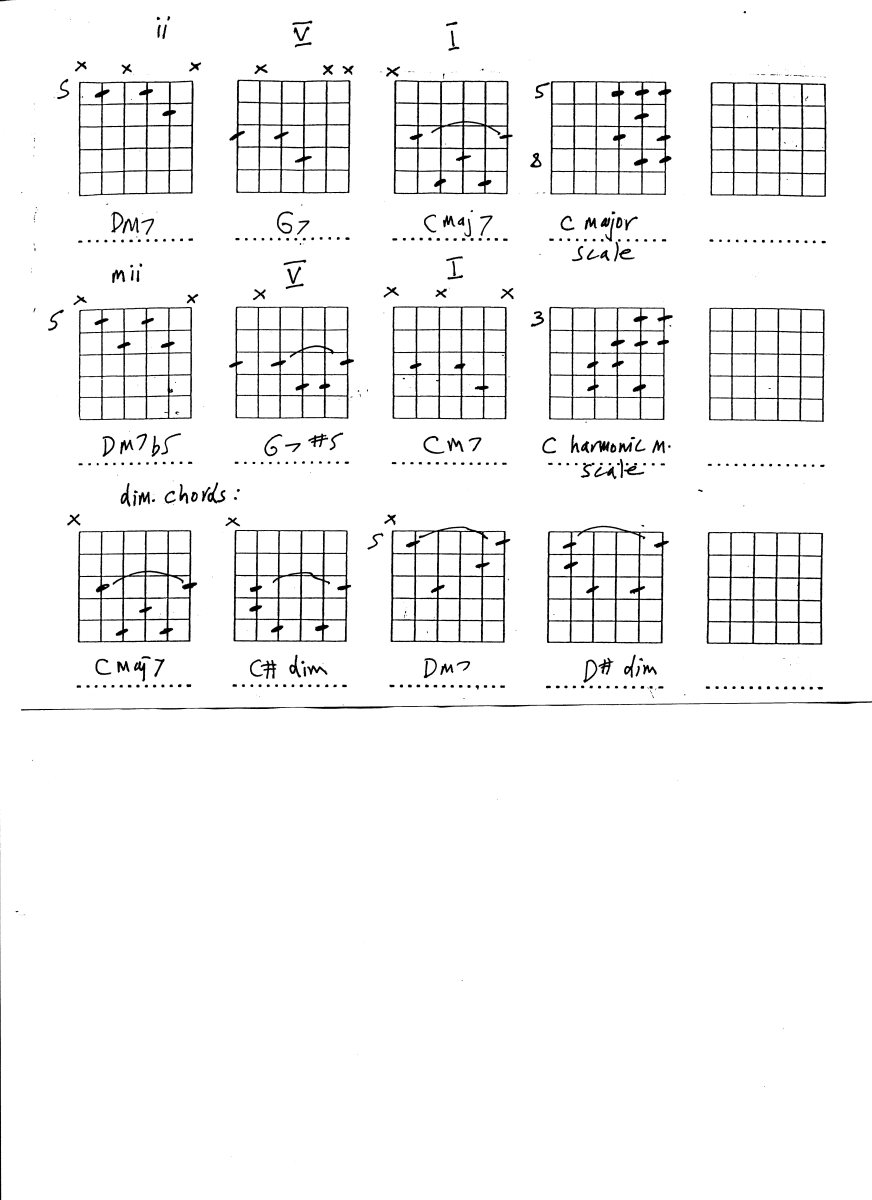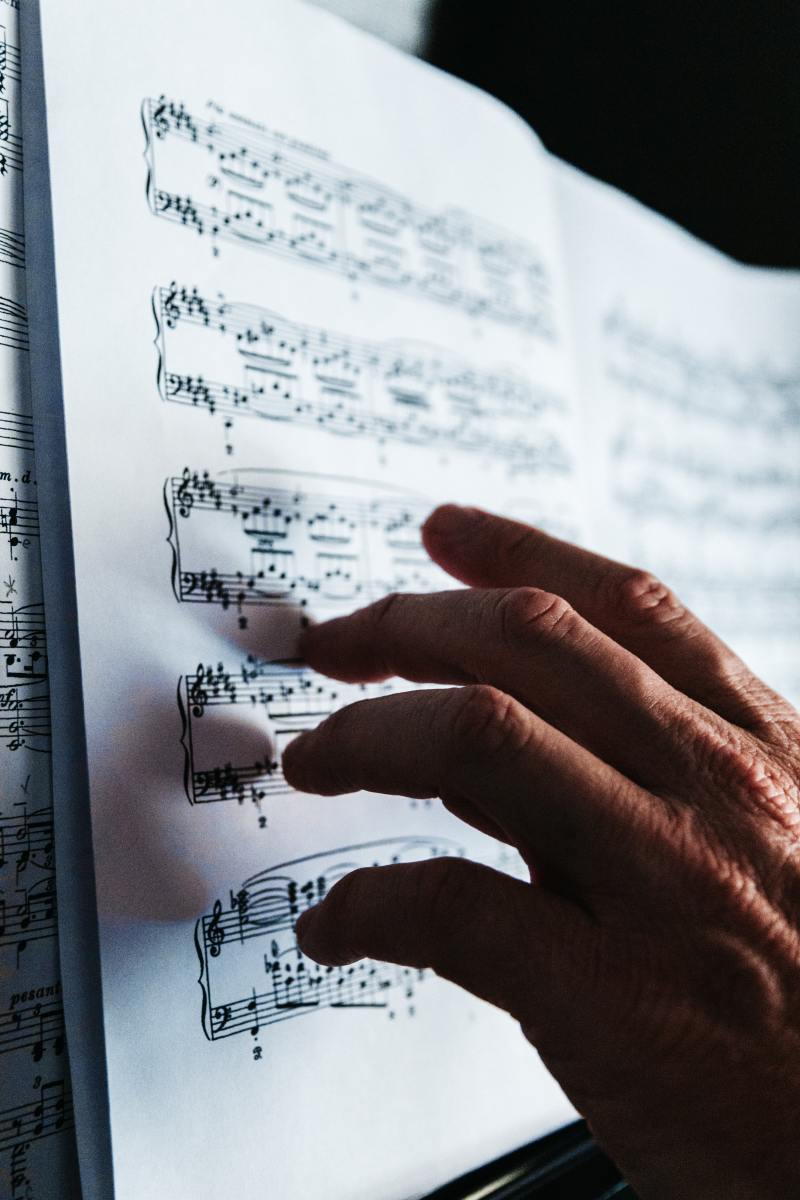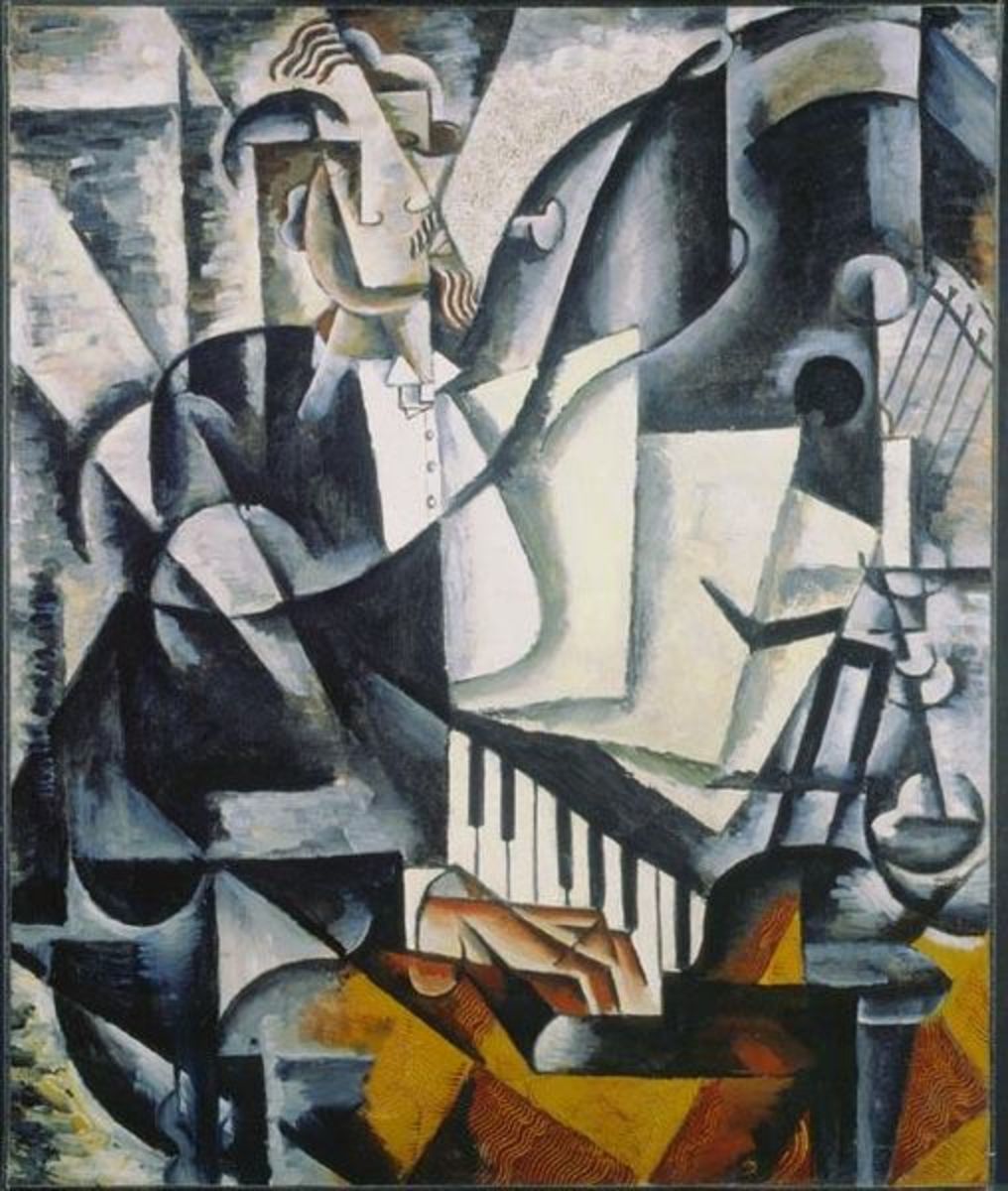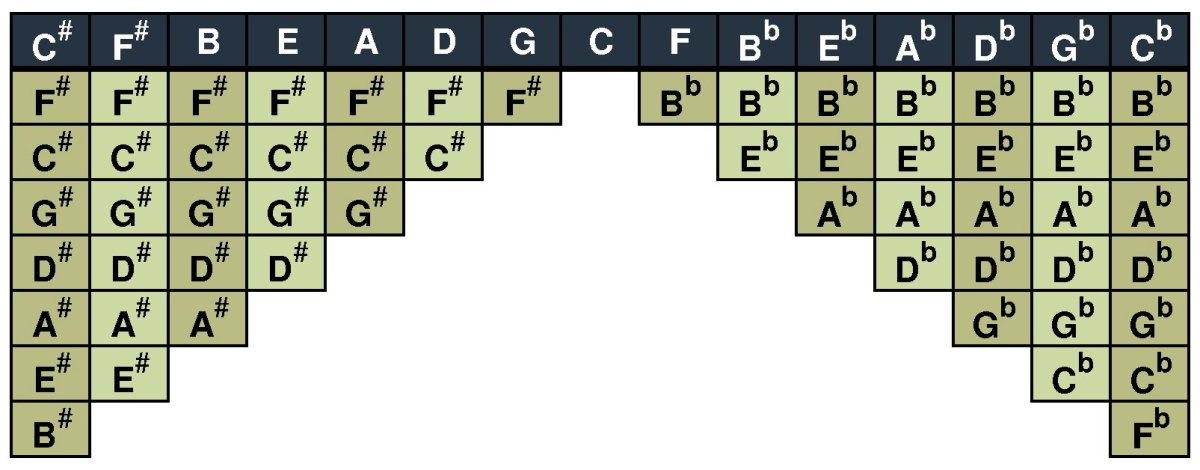How to Make Music Sound Good
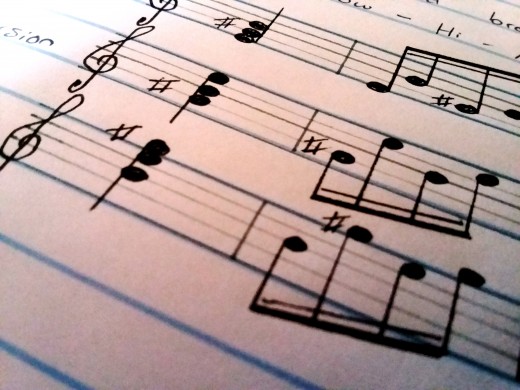
Introduction
In the study of music, students are taught which notes complement each other in a scale, and which chords work best together to create a musical piece that is more pleasing to the ear. So what is it that makes us love one tune more than the other? And how does it work? And more importantly, how can we do it too?
There are several major elements that need to be addressed when constructing a musical piece that will ultimately hit the ‘sweet spot’ with the human ear.
Scales & Chord Progression
This is the set of chords in a scale that will play after each other. There are 8 keys in a scale. E.g. C Major scale has keys: C-D-E-F-G-A-B-C. A chord in such a scale will only consist of the keys in that scale. So the C chord can be C-E-F played together or if you play it in an Inversion; E-F-C. Same will go for E.g. the G major scale with the keys: G-A-B-C-D-E-F#-G and;
G chord: G-B-C or the B chord: B-D-F#
With this in mind, you can construct a progression of chords in your respective scale. The chords you use will determine whether or not the sound will be pleasing. This is important because there are specific rules to follow because the sequence of the chords establishes the harmony of the sound. Which is the underlying foundation of everything else that is to follow in a musical piece.
Roman Numerals & Chords
Chord progressions are usually represented in roman numerals in music. This basically means that there is a number for each of the eight keys in a scale.
So in a C Major scale; C-I, D-II, E-III, F-IV, G-V, A-VI, B-VII, C-I again because the scale always moves in a loop.
Therefore the most popular progressions are (using the C Major scale as an example):
I-V-VI-IV
I-VI-IV-V
I-IV-V-IV
The lists are generally endless and are easily obtained online.
Chord Progressions that differ
Songs may have different types of chord progressions that can create a mood. Here is a simple list of them:
Basic Chord Progression: I-IV-V-I
Varied Basic Chord Progression: I-ii-V-vi
(I will explain cadences a bit later)
Final cadence: V-I of IV-I
Non final Cadence: V-vi or I-V or IV-V and ii-V
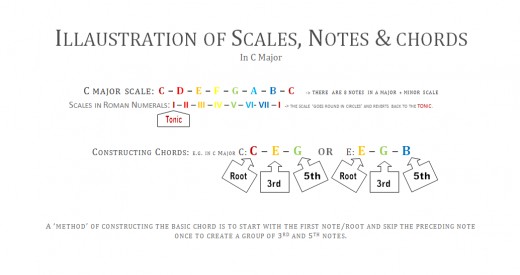
Melody
The melody of any song is important because it is the use of keys with the chord structure to create the harmonies that define the sound of a musical piece. Therefore one would usually use specific notes in the melody that are more pleasing to the ear than others.
Ultimately it is the melody that will create the riff or hook in the song. The riff or hook is a term used to identify a set of notes played in a specific way that will stick in your head, thus making the song a success.
Take a listen to successful songs like Oasis-“So Sally can wait, she knows it’s too late as she’s walking on bye” or The Beatles “We all live in a yellow submarine…”
These stick in your head because they have a set melody and chord progression combined with harmony to produce something memorable.
The Melody and Chords creating Harmony
Generally the construction of a Riff or Hook is the use of the specific notes found in a Scale. So in your G Major scale the only notes recommended are the ones within the G Major scale. But there are a bunch of rules that could help with the construction of a successful melody.
Below is a common set of rules usually taught to young music students when constructing a 4 chord progression that will accompany the melody.
Always start on the first key of a scale, called the Tonic or I on the first beat of the song. The preceding down beat before the next beat usually progresses to the 5th or V note of a scale or the 4th IV note. After this you would generally move to a selection of notes according to your chord progression, moving up to 3 notes down in a scale, usually no more. So V could become IV or III. And IV could become II if need be. The final note of the progression can vary depending on whether it is the final chord of the song or just the final chord of the verse or chorus. The rule of thumb is that if it is the final note or chord of the entire song, it should end on the Tonic or I chord or note. (This is where Cadences come in)
Cadences
Cadences are chord progressions that will determine the final ‘feel of the song’. You can make a song sound incomplete, interrupted or final. Thus there are specific rules to creating a type of ending in a chord progression or a song in general. As you have already seen above, they affect different chord progressions into become final or non final in nature. Let’s build up an example;
A final sounding cadence could look like this: I-IV-V-I
The reason why the progression will sound ‘final’ is because the progression ended where it started: from I to I. In almost every pop song you hear today, the final chord you hear in the song is exactly the same as the first one.
A non final cadence could be: I-IV-I-V
Its sound ‘unfinished’ because the final chord in the progression has basically been left standing in the middle of the scale. These are progressions usually used in the middle of a song to give that feeling of sudden suspension in time. A moment of ‘nothingness’ before the song continues till the end.
Major & Minor makes happy and sad songs
The type of scale will determine of a song will sound happy, moody, cheerful or sad. And so it is important to be able to identify the two fundamental forms that are Major and Minor.
Major scales create the happy and cheerful songs, and Minor creates the melancholic or moody songs. This is because within the 8 notes of the specific scale, there are certain variations that make them sound the way they do.
Tones and Semitones in a scale
Musicians use the term Tone and Semitone to measure the distance between one note and another. This is important because they create the variations in a scale that will determine where it will be a Major or Minor scale. To understand this, we need to learn about Accidentals. These are symbols used in musical notation to identify the specific note in a scale. Because there aren’t only the notes A-B-C-D-E-F-G but also A#-C#-D#-F#-G# (note there is no B# and E#, for now; this is a general rule in music).
There is also Aᵇ-B ᵇ-C ᵇ-D ᵇ-E ᵇ-F ᵇ-G ᵇ.
ᵇ is called a Flat and # is called a sharp.
So a Tone apart means there is a note between them e.g. A-A#-B or B-Bᵇ-A.
A Semitone apart means there is no note between two notes e.g. B-C or F-F#.
Majors and Relative Minors
For every Major scale there is a relatable minor scale which will have the same Sharps or Flats in it. The only difference is what note the scale begins in AND that in every minor scale, the 7th note in the scale is raised a semitone.
To find the relative minor of a scale, you simply move the Scales tonic note 3 semitones DOWN.
So: Gmajor = G-A-B-C-D-E-F#-G will be Eminor = E-F#-G-A-B-C-D#-E
Or: Fmajor = F-G-A-Bᵇ-C-D will be Dminor = D-E-F-G-A-Bᵇ-C#-D
A list of Major and their relative Minor scales are below.
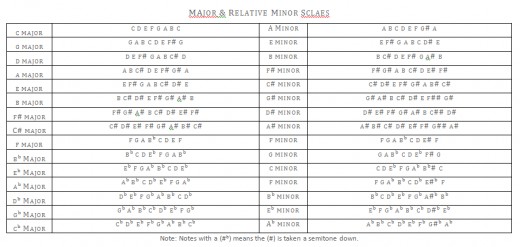
Tempo
Probably the simplest factor to understand. The tempo is the speed of a song, and naturally the faster the song, the more aggressive or joyful it may become. The slower the song, the sadder or eerier it becomes.
Song Structure & Arrangement
Our final factor in creating a good song is simply the layout of the song and the arrangement of the song.
The arrangement of a song is the type of instruments played in a song along with the way they are played. If you want to create a punk song you cannot necessarily use a violin. You also cannot play a guitar in a manner that is suitable for Mexican Flamenco. Arranging also means when and where each instrument will be heard. To make a cool garage band song you’d probably want to begin with a rumbling bass guitar before the drums come in with a heavy kick. Ultimately it becomes a matter of personal preference, but it is important to keep all of this in mind nonetheless.
The song structure is also a part of the arrangement. This is the Chorus, Verse Bridge and other such elements in the song. Music students of contemporary music are usually taught this structure (depending on the song genre):
(optional) Intro
Verse
Chorus
(optional) Breakdown
Verse 2
Chorus
(optional) Breakdown
Verse 3
(optional) Bridge
Chorus
(optional) Bridge
(optional) Outro
Summary
So we learnt that constructing a song that is catchy can be a little complicated. What we have seen now is only the tip of the iceberg on what a typical music student learns. With any luck, this could be a useful guideline to those who only want to learn the absolute basics, if not a little more.
We learnt that:
- You need to create a chord progression that sounds good. What type of progression would you want in order to create the sound you want?
- You need to choose your desired Major or Minor scale. Remember Major is happy and Minor is sad.
- You need to produce a melody with the scale that provides a riff or hook. This is essential as it is what makes the song successful.
- Decide on the speed of your song.
- Decide on the instruments you want to have in your song, how they will sound, when they will play and in what manner they will be played.
- Construct the layout of your song. The song structure may vary according to the genre of the song you wish to produce.
And as simple as all that may sound, like all things, it takes practice and patience. Along with using your own ear and creative initiative in order to produce a song that is pleasing to the ear, these basic rules are first taught and followed by musicians who need a foundation to work on.
After a while you may gain experience and begin to simply create music without such guidelines, and the foundation you were taught will be able to teach you how to create music that is original and most importantly, successful in catching ones attention.
Bibliography
Cloete, S. J, E. M Hoeksma, and B. R Verity. Credo. Witbank: Credo Theory of Music, 1998. Print.
TAYLOR, Eric. Music Theory In Practice. ABRSM, 2008. Print.
Yandell, Naomi. Theory Of Music Workbook. London: Trinity College, 2012. Print.
Music Theory Book Recommendations.
There are a great selection of books to choose from online, the ones I have used personally as a music student have varied. Over time I found two books I would highly reccomend to anyone interested in music theory.
ABRSM Music Theory Books Grade 1 - 5
Credo Theory of Music Training Programme Grade 1 - 5
Credo is a South African series written by SJ Cloete. It comes highly recommended because of the intense depth of information it has in its curriculum.

